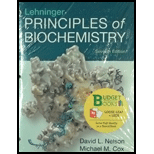
Concept explainers
(a)
To determine: The electron donor in reaction:
(1)
(2)
(3)
Introduction:
(a)
Explanation of Solution
Explanation:
The electron donor is the chemical species in a
In reaction (1)
In reaction (2)
In reaction (3)
(b)
To determine: The electron acceptor in reaction:
(1)
(2)
(3)
Introduction:
Oxidation-reduction reactions are those reactions which involve the change in the oxidation state of participating atoms. These reactions involve the transfer of electrons. The chemical compound from which electron is removed is termed as oxidized and in which electron is added is said to be reduced.
(b)
Explanation of Solution
Explanation:
The electron acceptor is the chemical species which accepts electron from the donor species and becomes oxidized. Since electron acceptor accepts electron they are also known as oxidizing agent.
In reaction (1)
In reaction (2)
In reaction (3)
(c)
To determine: Conjugate pair in reaction:
(1)
(2)
(3)
Introduction:
Oxidation-reduction reactions are those reactions which involve the change in the oxidation state of participating atoms. These reactions involve the transfer of electrons. The chemical compound from which electron is removed is termed as oxidized and in which electron is added is said to be reduced.
(c)
Explanation of Solution
Explanation:
Conjugate pair is the pair of two chemical species in which one is the electron donor and another is the electron acceptor species.
In reaction (1)
In reaction (2)
In reaction (3)
(d)
To determine: The reducing agent in reaction
(1)
(2)
(3)
Introduction:
Oxidation-reduction reactions are those reactions which involve the change in the oxidation state of participating atoms. These reactions involve the transfer of electrons. The chemical compound from which electron is removed is termed as oxidized and in which electron is added is said to be reduced.
(d)
Explanation of Solution
Explanation:
The reducing agents are those chemical species which donate electron and they become oxidizing, thereby reducing it.
In reaction (1)
In reaction (2)
In reaction (3)
(e)
To determine: The oxidizing agent in reaction:
(1)
(2)
(3)
Introduction:
Oxidation-reduction reactions are those reactions which involve the change in the oxidation state of participating atoms. These reactions involve the transfer of electrons. The chemical compound from which electron is removed is termed as oxidized and in which electron is added is said to be reduced.
(e)
Explanation of Solution
Explanation:
The oxidizing agents are those chemical species which accepts electron, thereby themselves becoming reduced and oxidizing the other species.
In reaction (1)
In reaction (2)
In reaction (3)
Want to see more full solutions like this?
Chapter 19 Solutions
Loose-leaf Version for Lehninger Principles of Biochemistry 7E & SaplingPlus for Lehninger Principles of Biochemistry 7E (Six-Month Access)
- Which type of enzyme catalyses the following reaction? oxidoreductase, transferase, hydrolase, lyase, isomerase, or ligase.arrow_forward+NH+ CO₂ +P H₂N + ATP H₂N NH₂ +ADParrow_forwardWhich type of enzyme catalyses the following reaction? oxidoreductase, transferase, hydrolase, lyase, isomerase, or ligase.arrow_forward
- Which features of the curves in Figure 30-2 indicates that the enzyme is not consumed in the overall reaction? ES is lower in energy that E + S and EP is lower in energy than E + P. What does this tell you about the stability of ES versus E + S and EP versus E + P.arrow_forwardLooking at the figure 30-5 what intermolecular forces are present between the substrate and the enzyme and the substrate and cofactors.arrow_forwardprovide short answers to the followings Urgent!arrow_forward
- Pyruvate is accepted into the TCA cycle by a “feeder” reaction using the pyruvatedehydrogenase complex, resulting in acetyl-CoA and CO2. Provide a full mechanismfor this reaction utilizing the TPP cofactor. Include the roles of all cofactors.arrow_forwardB- Vitamins are converted readily into important metabolic cofactors. Deficiency inany one of them has serious side effects. a. The disease beriberi results from a vitamin B 1 (Thiamine) deficiency and ischaracterized by cardiac and neurological symptoms. One key diagnostic forthis disease is an increased level of pyruvate and α-ketoglutarate in thebloodstream. How does this vitamin deficiency lead to increased serumlevels of these factors? b. What would you expect the effect on the TCA intermediates for a patientsuffering from vitamin B 5 deficiency? c. What would you expect the effect on the TCA intermediates for a patientsuffering from vitamin B 2 /B 3 deficiency?arrow_forwardDraw the Krebs Cycle and show the entry points for the amino acids Alanine,Glutamic Acid, Asparagine, and Valine into the Krebs Cycle - (Draw the Mechanism). How many rounds of Krebs will be required to waste all Carbons of Glutamic Acidas CO2?arrow_forward
 BiochemistryBiochemistryISBN:9781319114671Author:Lubert Stryer, Jeremy M. Berg, John L. Tymoczko, Gregory J. Gatto Jr.Publisher:W. H. Freeman
BiochemistryBiochemistryISBN:9781319114671Author:Lubert Stryer, Jeremy M. Berg, John L. Tymoczko, Gregory J. Gatto Jr.Publisher:W. H. Freeman Lehninger Principles of BiochemistryBiochemistryISBN:9781464126116Author:David L. Nelson, Michael M. CoxPublisher:W. H. Freeman
Lehninger Principles of BiochemistryBiochemistryISBN:9781464126116Author:David L. Nelson, Michael M. CoxPublisher:W. H. Freeman Fundamentals of Biochemistry: Life at the Molecul...BiochemistryISBN:9781118918401Author:Donald Voet, Judith G. Voet, Charlotte W. PrattPublisher:WILEY
Fundamentals of Biochemistry: Life at the Molecul...BiochemistryISBN:9781118918401Author:Donald Voet, Judith G. Voet, Charlotte W. PrattPublisher:WILEY BiochemistryBiochemistryISBN:9781305961135Author:Mary K. Campbell, Shawn O. Farrell, Owen M. McDougalPublisher:Cengage Learning
BiochemistryBiochemistryISBN:9781305961135Author:Mary K. Campbell, Shawn O. Farrell, Owen M. McDougalPublisher:Cengage Learning BiochemistryBiochemistryISBN:9781305577206Author:Reginald H. Garrett, Charles M. GrishamPublisher:Cengage Learning
BiochemistryBiochemistryISBN:9781305577206Author:Reginald H. Garrett, Charles M. GrishamPublisher:Cengage Learning Fundamentals of General, Organic, and Biological ...BiochemistryISBN:9780134015187Author:John E. McMurry, David S. Ballantine, Carl A. Hoeger, Virginia E. PetersonPublisher:PEARSON
Fundamentals of General, Organic, and Biological ...BiochemistryISBN:9780134015187Author:John E. McMurry, David S. Ballantine, Carl A. Hoeger, Virginia E. PetersonPublisher:PEARSON





